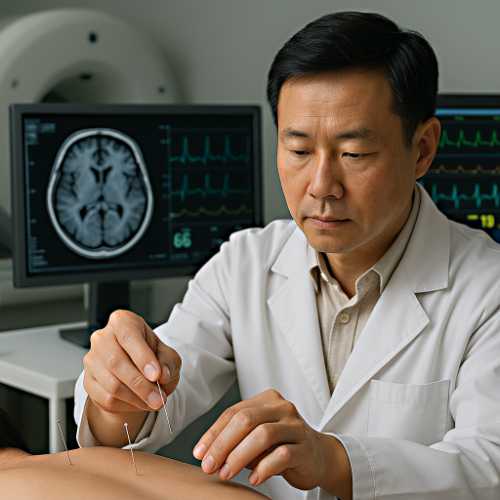Understanding High Blood Pressure
A Western Medical View
High blood pressure—or hypertension—is one of the most common chronic conditions in the Western world. It affects nearly half of all adults in the United States and contributes to more than 670,000 deaths each year. It’s often called “the silent killer” because it typically causes no symptoms until it leads to something serious: stroke, heart attack, kidney failure, or vision loss.
The numbers are staggering. According to the CDC, around 120 million American adults have high blood pressure, and only about 1 in 4 have it under control. The situation is getting worse, not better—partly due to diet, stress, sedentary habits, and rising rates of obesity. Many people don’t even know they have it until their doctor finds it during a routine exam.
How Western Medicine Diagnoses and Tracks It
In Western medicine, blood pressure is tracked using two numbers: systolic (pressure when the heart beats) and diastolic (pressure when the heart rests). A normal reading is considered below 120/80. Anything above that begins to fall into the categories of elevated or hypertensive, with guidelines from the American Heart Association classifying blood pressure in stages.
Doctors may use home monitoring, ambulatory blood pressure readings, or in-office measurements to confirm a diagnosis. The emphasis is on numbers, risk factors, and early intervention.
How Western Medicine and TCM
Can Work Together
High blood pressure often needs long-term care—but that care can come from more than one direction. When Western medicine and Traditional Chinese Medicine (TCM) are combined thoughtfully, they support both the numbers and the person.
Here’s how they can work together:
🩺 Western Medicine Provides:
- Diagnostic tools and blood pressure monitoring
- Medications that reduce immediate cardiovascular risk
- Clear guidelines for diet, weight, and exercise
- Emergency care when pressure becomes dangerously high
🌿 TCM Offers:
- Acupuncture to calm the nervous system and support circulation
- Herbal formulas tailored to individual patterns
- Guidance on stress, emotions, and lifestyle rhythms
- Dietary advice based on body constitution, not just nutrients
Together, they form a full picture.
TCM helps manage the why behind the pressure—while Western medicine manages the how high it gets. By supporting emotional health, digestion, and daily routines, TCM makes it easier to maintain lifestyle changes and may even reduce reliance on medications over time (with physician guidance).
Always coordinate care between your practitioners—and never stop medications without medical advice. When the two systems respect each other, the results can be powerful.
Treatment Focus: Medications and Lifestyle
Once high blood pressure is diagnosed, treatment usually begins with lifestyle changes. Doctors recommend reducing salt, exercising more, cutting alcohol, and quitting smoking. When these changes aren’t enough—or if the blood pressure is very high from the start—medication is introduced.
There are several classes of blood pressure medications, each targeting a different mechanism:
- Diuretics help the body shed excess sodium and fluid.
- ACE inhibitors relax blood vessels by blocking hormone activity.
- Beta-blockers reduce heart rate and lower pressure.
- Calcium channel blockers ease vessel tension and improve blood flow.
These medications are often used in combination and monitored carefully. They are effective at lowering numbers—but they don’t address the emotional, dietary, or energetic factors that may also play a role in blood pressure regulation.
The Role of Stress and Lifestyle
Western guidelines now recognize that stress plays a larger role in hypertension than once thought. Chronic mental and emotional strain can raise blood pressure, contribute to unhealthy habits, and prevent people from following treatment plans. Doctors sometimes encourage relaxation techniques, mindfulness, or counseling, though these are typically seen as supportive—not central—to care.
That’s where Traditional Chinese Medicine (TCM) takes a different path. TCM places a strong emphasis on emotional regulation and daily rhythm. Stress, frustration, and bottled-up anger are seen as contributors to rising internal pressure—not just metaphorically, but physically. Practices like Acupuncture and and exercises like Qigong are designed to calm the system, not only to relax the mind but to change how the body reacts to life’s ups and downs.
Two Systems, One Goal
Western medicine is structured, data-driven, and focused on risk reduction. It’s excellent for managing acute crises and tracking measurable change. It also provides lifesaving medications that help prevent strokes and heart attacks. For many people, these tools are essential.
At the same time, high blood pressure doesn’t exist in isolation—it’s part of a person’s whole life. Sleep, food, emotions, relationships, and environment all play a role. This is where a more holistic model, like TCM, may complement conventional care. Instead of replacing medications, it works alongside them—supporting the person while the numbers are being managed.
Hypertension may be silent, but its causes aren’t. With the right blend of tools—medical and personal, clinical and traditional—many people find that their blood pressure improves not just on paper, but in how they feel each day.



